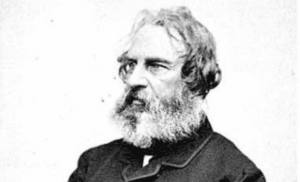If 25 percent of the New Testament has the ascension of Christ as its central event and theological emphasis, why is this the most overlooked doctrine in modern evangelicalism? [1]
I don’t think I ever heard a sermon, lecture, Bible study, or song on the doctrine and implications of the ascension of Christ. I have become well versed in Jesus’ birth, his earthly life, death, resurrection, and return. Yet for most of my life, his ascended life was mostly a vague concept.
Talking about what Jesus has done and will do would be easier for most than describing where he is and what he is doing right now. If you were to ask ordinary Christians, “Why did Jesus come to earth?” they would likely respond by saying: “Jesus came to earth to die on a cross to pay for my sins so that I can go to heaven one day.” That is part of the story; it’s just not the whole story.
Prophetic Window of the Psalms
My journey of discovery into the doctrine and implications of the ascension began around 2005. I was driving to the church one morning as I began to sing a chorus in my mind inspired by Psalm 24. While I was crafting the song I began reading commentaries on this text. One in particular had something fascinating to say. The author wrote that regarding Christ’s ascension, the disciples saw his “going.” However, Psalm 24 is a prophetic window into his heavenly “arriving.” [2] That one thought set me on a creative and theological journey.
Peter himself provides precedent for this interpretation in the Book of Acts. When preaching on Pentecost, Peter quoted from Psalm 16:
I know the Lord is always with me.
I will not be shaken, for he is right beside me.
No wonder my heart is glad, and I rejoice.
My body rests in safety.
For you will not leave my soul among the dead
or allow your holy one to rot in the grave.
You will show me the way of life,
granting me the joy of your presence
and the pleasures of living with you forever. (Psalm 16:8-11, NLT)
He then offered apostolic commentary:
Dear brothers, think about this! You can be sure that the patriarch David wasn’t referring to himself, for he died and was buried, and his tomb is still here among us. But he was a prophet, and he knew God had promised with an oath that one of David’s own descendants would sit on his throne. David was looking into the future and speaking of the Messiah’s resurrection. He was saying that God would not leave him among the dead or allow his body to rot in the grave. (Acts 2:29-31, emphasis mine)
The same could be said of Psalm 24. It isn’t merely an earthly enthronement liturgy; ultimately, David is looking into the future and speaking of the Messiah’s ascension. Who may ascend the mountain of the Lord? Who may stand in the holy place? Jesus is the only one with clean hands and a pure heart. Who is the King of glory? Not David. Jesus is the King of glory for whom the ancient, heavenly gates are opened! He is the Lord, strong and mighty!
Theological Center of Luke-Acts
When we examine the whole of Luke’s work, we see he organized Gospel and Acts around the ascension. One scholar writes, “Rightly understood, the ascension narratives of Luke . . . provide a crucial key to the unlocking of Luke’s theology and purpose.” [3]
Some have argued for a chiastic structure in Luke-Acts with the ascension at the center. [4] Luke’s Gospel begins in a Roman context, then the story moves through Samaria, Judea, to Jerusalem, and ultimately, to Jesus’ ascension on the Mount of Olives. The Book of Acts picks up with the ascension and then takes the reader on a journey with the early church in Jerusalem, then scattering throughout Judea and Samaria, and ultimately to Rome.
Luke gave the reader markers along the way, signaling the priority and importance he placed on the ascension. To begin his “travel narrative” section Luke wrote: “As the time drew near for him to ascend to heaven, Jesus resolutely set out for Jerusalem” (Luke 9:51). In the Book of Acts, just before the crowd stoned Stephen, Luke let us know that Stephen saw the ascended Jesus: “Look, I see the heavens opened and the Son of Man standing in the place of honor at God’s right hand” (Acts 7:56). Clearly, for Luke, the ascension was central, organizationally and theologically.
Lyrical Creed of the Early Church
Finally, we learn from the first Christological creeds that the ascension was a central doctrine for Paul and the early church. In his first letter to Timothy, Paul encouraged this young pastor and evangelist with wisdom and insight about ministry. Midway through his correspondence Paul wrote, “Without question, this is the mystery of our faith.” And then he quoted what many scholars believe to be an early hymn fragment:
Christ was revealed in a human body
and vindicated by the Spirit.
He was seen by angels
and announced to the nations.
He was believed in throughout the world
and taken to heaven in glory. (1 Timothy 3:16)
There is poetic beauty, symmetry, and theological richness to this early hymn fragment. The series of couplets describe Christ’s incarnation; the presence of unseen realities; his revelation to this world; and, interestingly, his ascension to heaven. Though the cross, resurrection, and return of Christ are vital to the faith, they are not described in this early lyrical and creedal statement. The life of Christ is summed up in his birth and his ascension.
Forgotten Feast of Today
With this clear biblical witness, how did we lose the doctrine of the ascension in the modern evangelical church? How did something so fundamental to our faith become obscured and neglected? I think this loss has come, in part, because we no longer recognize the full story of the Christian year. Most evangelical churches only celebrate Christmas and Easter, leaving out Ascension Day and the Day of Pentecost. Our Christmas pageants, Easter cantatas, Passion dramas, and atonement sermons have developed our consciousness of the virgin-born, crucified, and resurrected Jesus. But we have forgotten the ascended Christ.
In subsequent articles, I will chart a way forward in rediscovering the ascended life of Jesus, reflecting on the present ministry of Christ and the Holy Spirit as well as the present realm of heaven.
[1] Luke’s writings (Luke-Acts) account for 25 percent of the New Testament, a figure based on the number of words in Luke-Acts relative to the total number of words in the New Testament. Luke places the ascension at the end of his Gospel and at the beginning of the Book of Acts.
[2] Henry Reardon, Christ in the Psalms (Ben Lomond, CA: Conciliar Press, 2000), 45.
[3] John F. Maile, “The Ascension in Luke-Acts,” Tyndale Bulletin 37 (1986): 29-59
[4] Kenneth Wolfe, “The Chiastic Structure of Luke-Acts and Some Implications for Worship,” Southwestern Journal of Theology 22 (1980) 60-71. A chiasm is a literary device used to organize a writer’s flow of thought in the form: A, B, C, D, C’, B’, A’.
Involved in Women’s Ministry? Add This to Your Discipleship Tool Kit.
 We need one another. Yet we don’t always know how to develop deep relationships to help us grow in the Christian life. Younger believers benefit from the guidance and wisdom of more mature saints as their faith deepens. But too often, potential mentors lack clarity and training on how to engage in discipling those they can influence.
We need one another. Yet we don’t always know how to develop deep relationships to help us grow in the Christian life. Younger believers benefit from the guidance and wisdom of more mature saints as their faith deepens. But too often, potential mentors lack clarity and training on how to engage in discipling those they can influence.
Whether you’re longing to find a spiritual mentor or hoping to serve as a guide for someone else, we have a FREE resource to encourage and equip you. In Growing Together: Taking Mentoring Beyond Small Talk and Prayer Requests, Melissa Kruger, TGC’s vice president of discipleship programming, offers encouraging lessons to guide conversations that promote spiritual growth in both the mentee and mentor.





























